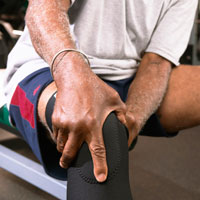No Pain (And Much to Gain)
“If it hurts, do I have to stop?”
That’s what I hear, at least once a day, every day, in my medical office and usually, it’s coming from an otherwise intelligent, successful, rational person.
Now look: we’ve all been there, during a game, or a workout, maybe during a run … without so much as a trip or a fall, you find yourself beset with a new pain. At first it’s a twinge, then it becomes more intense. It can even get so intense you have to rub at it, but … eventually, it goes away.
I would like you to know that you are not doing any harm. As long as it goes away, you can probably keep moving. It’s the “No Pain, No Gain” idea, grounded in the notion that physical activity will make the muscles sore. This is perfectly natural; the act of putting your body in motion, to lift weights, or to do yoga, requires effort and effort is hard. This physical stress is what helps build endurance, and stamina and strength. By working hard we are able to improve our fitness and cardiovascular health. And it hurts. Hence, no pain, no gain.
However, if the pain doesn’t stop or it gets worse, then yes! Stop. If it hurts every time you take a step, stop stepping. If lifting your arms is painful — not sore or uncomfortable, but hurting — your body is telling you something, and you may need to see a doctor. And yes, you should stop lifting your arm up, too. This “pain” is very different than the familiar pain you might get from simple sore muscle, or from the twinge or cramp that comes mid-workout. A tired ankle doesn’t ever feel like the stabbing pain of a sprained ankle. In this case, these pains are your body telling you to knock it off, and it’s up to you to be smart enough to listen. As a surgeon who sees people with exercise-induced injuries every day, I want to ask you to do yourself a favor: be safe. Listen to your body. It knows you best.



